2014 Land Rover Range Rover Evoque Review

There’s nothing quite like a Range Rover. These robust vehicles are purpose built to tackle some of the roughest terrain in the world, from fording monsoon-swelled rivers to trekking across the Ethiopian Highlands. About the only thing that can stop a driver in one of these rigs is an empty fuel tank.
FAST FACTS
| Engine: 2.0-liter turbo, 240 hp and 250 lb-ft of torque. |
| Transmission: Nine-speed automatic. |
| Fuel Economy: 21 MPG city, 30 highway and 24 MPG combined. |
| Pricing: $63,715 as tested including $895 in destination fees. |
But Range Rovers aren’t just for grueling expeditions. They’re also luxurious, with leather-clad interiors and more creature comforts than Buckingham Palace.
A Different Kind of Range Rover
The Evoque is a friendlier, more efficient Range Rover and unlike its bulky brethren it’s perfectly at home in suburbia if not the jungles of Myanmar.
Still, it’s got a premium cabin and dynamic styling all in a much more manageably sized package. The family resemblance is obvious but compared to the brand’s namesake model it’s much smaller. The Evoque is more than two feet shorter and around 1,200 pounds lighter than the new Range Rover.
Get the Flash Player to see this player.
City Chic
Initially I didn’t find this vehicle’s interior all that impressive. It was overwhelmingly dark with black leather seats, anthracite-colored door panels and a dashboard so non-reflective it rivaled a creosote-choked chimney flu. But during my week with the Evoke its cabin grew on me, my appreciation blossoming like an English rose in spring.
The overall layout is simple and honest with a pleasingly symmetrical design. You get the impression that this vehicle isn’t trying too hard; there are no swoopy surfaces or frivolous design flourishes, just straightforward forms and mostly easy-to-use controls.
Additionally, pretty much all of the materials are top-notch; soft, low-sheen plastics abound as does creamy leather. Contrast stitching helps brighten things a little, as does brushed-aluminum trim that tumbles down the center stack, spilling onto the console. An optional glass roof also brightens things considerably when the shade is fully retracted.
Helping with runs to Costco or Ikea, the Evoque’s cargo hold offers up to 51 cubic feet of storage space with the back bench folded. That’s about 20 fewer cubes than in a Honda CR-V.
Checkin’ the Tech
One noteworthy feature of the Evoque’s cabin is a rotary gear selector. When the engine is started it rises up from the lower control panel allowing you to select the direction you want to go; kill the power and it motors down again. Some may find this gimmicky but I thought it was pretty neat.
The Range Rover Evoque’s electronics are bit behind the curve. For example, its navigation system is a little obtuse and can be challenging to operate. Also, the display in the meter cluster looks a few years out of date. Sure, it’s a nice touch and offers a full spectrum of color (unlike some Hondas today) but it’s pretty grainy. Even the backup camera is strangely implemented. The sensor is mounted off-center at the rear of the vehicle and as a result it provides a strangely off-kilter image when reversing.
And that camera is not just a high-tech nicety, it’s totally necessary. The Evoque’s dramatic exterior styling with a rising belt line and tapering roof severely impinges on the driver’s sightlines. Rearward visibility is particularly challenged, but this is the price you pay for vanity.
Minor quibbles aside there is one aspect of the Evoque’s cabin that I despise with the furor of a Pepsi executive trapped in Atlanta’s World of Coca-Cola. During my evaluation the vehicle’s front foot-wells became the target of my ire. First of all they’re restrictively narrow. Then there’s the dead pedal, which is awkwardly shaped and leaves no room for your toes. On top of all that there’s a super-annoying structural support that runs under the front seats and greatly intrudes on foot space. This arrangement is terrible and frankly inexcusable in a luxury vehicle. Perhaps it won’t bother you but it gets my dander up.
Mechanical Mayhem
Those restrictive foot-wells betray the Evoque’s blue-collar, Blue Oval origins. It’s actually built on a Ford architecture and not surprisingly that Dearborn influence continues elsewhere.
This vehicle is powered by a 2.0-liter turbocharged engine. Sound familiar? It should because it’s essentially Ford’s EcoBoost four-banger that powers mainstream vehicles like the Focus ST or Explorer. In this application it puts out 240 hp and 250 lb-ft of torque. Aside from a little choppiness at idle when the transmission is in drive the engine is as silky smooth as any other powerplant on the market today. It’s really slick and pulls strongly, with one major caveat.
The biggest news with the Evoque for 2014 is what’s bolted to the engine’s bellhousing. It’s now matched to a cutting-edge nine-speed automatic transmission. This gearbox replaces a six-speed unit, and how can you argue with a 50 percent increase in ratios?
Those advanced mechanicals result in notable fuel-economy numbers. The Evoque stickers at 21 MPG city and 30 on the highway. Combined it should average 24 MPG. These figures are bolstered by auto start/stop, which works very well. In a week of testing I averaged around 20 MPG.
Off-Road Ready
Admittedly the Evoque is more at home on the road that it is playing in mud, but like other models in the company’s lineup it’s ready to get dirty, if it has to. Given its front-wheel-drive bias this vehicle is not as hardcore as a proper Range Rover, but ensuring the Evoque can handle adverse conditions its standard four-wheel drive and Terrain Response systems are at the ready.
Drivers have a variety of modes to choose from including dedicated settings for sand, snow and mud. These are easily accessible by a pair of buttons on the center console. But we wonder whether a suburbia mode might be an appropriate addition or perhaps a setting that allows you to park in handicapped spaces even if you’re not disabled.
Options Boxes
Giving customers some welcome choice, Range Rover builds two versions of the Evoque. You can get a five-door model, which pretty much resembles a traditional crossover of if you’re a sporty type you can acquire one with just three doors. These look particularly striking especially when riding on large wheels.
Base price for a five-door model is around $42,025, including $895 for delivery, but our tester was dressed with a passel of expensive options that ballooned its sticker to $63,715. Extras that padded the price tag included the Dynamic Premium Package, which cost a whopping $15,200. Of course it included a huge number of desirable features including heated front and rear seats, adaptive xenon headlamps, 20-inch rims, a Meridian sound system and much more. Beyond this our test-model also had adaptive cruise control ($1,295), a black roof ($650) and a custom paint color ($950), a striking coppery hue called Zanzibar.
On-Road Manners
Driving the Evoque in its natural habitat (read: on road) reveals that it’s an altogether competent luxury crossover. Its steering ratio is surprisingly quick, which gives it an agile if somewhat edgy feel. Likewise its brake pedal is quite sensitive and requires a light touch.
Acceleration provided by its 240 hp engine is impressive, but now for that caveat I mentioned earlier. The Evoque is burdened with quite a bit of turbo lag. Punch the accelerator from a standstill and nothing happens for an uncomfortably long two or three seconds. This powerplant needs at least 3,000 RPM on the tachometer before it really starts pulling. Once underway there are no complaints about the way it performs but it’s a little lethargic off the line.
The transmission works pretty much seamlessly. This ZF-supplied nine-speed is the same one used in the Jeep Cherokee, which I evaluated earlier this year. Range Rover’s tuning seems much better though; shifts are unspoiled and prompt
The Verdict
The Range Rover Evoque is stylish, efficient and pleasant to drive. Undoubtedly it appeals to urban-types that want an all-weather crossover vehicle with a luxurious interior, rugged styling and fuel consumption that won’t lead to bankruptcy. Unfortunately it doesn’t come cheap. At $64,000 our fancied-up test model was not a terribly good value proposition. More troubling after a week with this vehicle I didn’t find it all that compelling. You can probably spend a lot less and get a bit more by going with something more mainstream.
LOVE IT
- Clean, tasteful exterior styling
- Responsive transmission
- Luxurious interior
- Smooth engine
LEAVE IT
- Low-resolution instrument display
- Obtuse infotainment system
- Narrow front foot wells
- Turbo lag

Born and raised in metro Detroit, Craig was steeped in mechanics from childhood. He feels as much at home with a wrench or welding gun in his hand as he does behind the wheel or in front of a camera. Putting his Bachelor's Degree in Journalism to good use, he's always pumping out videos, reviews, and features for AutoGuide.com. When the workday is over, he can be found out driving his fully restored 1936 Ford V8 sedan. Craig has covered the automotive industry full time for more than 10 years and is a member of the Automotive Press Association (APA) and Midwest Automotive Media Association (MAMA).
More by Craig Cole


















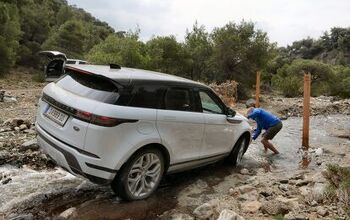



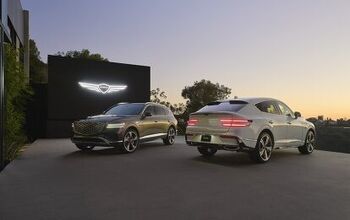
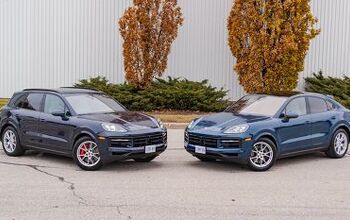

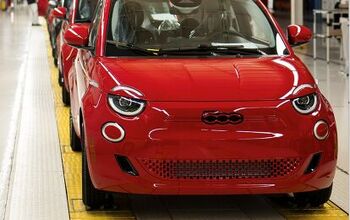
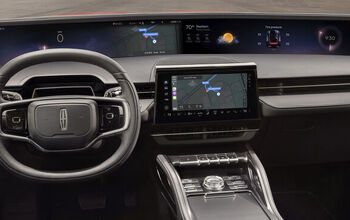


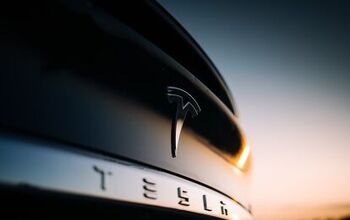

Comments
Join the conversation
There is ZERO space inside this thing. What a joke
This has to be the best looking SUV on the road!